Interface IP Cores for TSMC
Welcome to the ultimate
Interface IP Cores
for
TSMC
hub! Explore our vast directory of
Interface IP Cores
for
TSMC
All offers in
Interface IP Cores
for
TSMC
Filter
Compare
696
Interface IP Cores
for
TSMC
from
34
vendors
(1
-
10)
-
MIPI D-PHY and FPD-Link (LVDS) Combinational Transmitter for TSMC 22nm ULP
- Technology is TSMC 22nm ULP 1p10M.
- Supply voltage can be applied 1.0V for core voltage, 1.8V for IO voltage.
- Maximum data rate of each channel is 1.5Gbps at High-speed mode for MIPI D-PHY Transmitter.
- Data rate of each channel is 609Mbps for FPD-Link(LVDS).
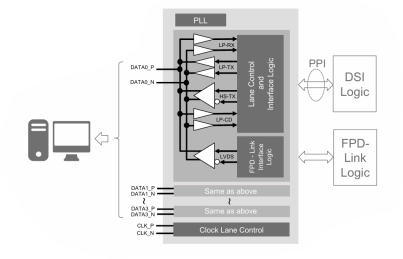
-
MIPI D-PHY Transmitter/Receiver for TSMC 40nm LP
- Renesas MIPI D-PHY Transmitter/Receiver can be used for analog Transmitter/Receiver of following interface.
- Technology is TSMC 40nm LP 1p6M (4x1z) .
- Supply voltage can be applied 1.1V for core voltage, 1.8V for IO voltage.
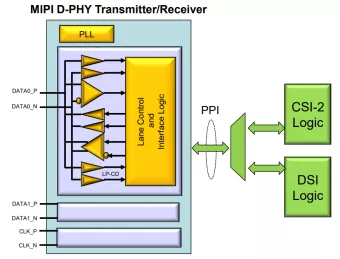
-
24-bit Cap-less ADC 106 dB SNR with ASRC 6 channels
- I2C and APB control interface
- Embedded low noise voltage regulator for best resilience to power supply noise
- Low BoM and capacitor-less input connection
- High dynamic range for high quality recording in far-field applications
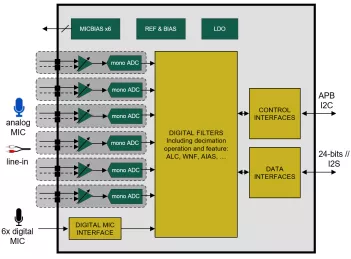
-
1G TCP Offload Engine TOE Very Low Latency (TOE)
- Ideal for high performance and mid performance specialized, differentiable ASICs or FPGAs for Network security or Network infrastructure applications
- Less than 4000 Xilinx slices, Altera ALMs or 150,000 ASIC gates + on-chip memory
- Fully integrated 100 M bit/1-G bit high performance EMAC.
- Scalable MAC Rx FIFOs and Tx FIFOs make it ideal for optimizing system performance.
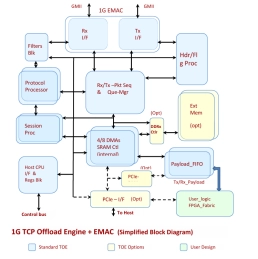
-
24-bit -130dB THD+N Multi-Channel Audio Sample Rate Converter
- This core can be used to interface digital audio equipments operating at different sample rates.
- It has been designed for systems requiring very high quality in terms of low harmonic distortion and noise, tolerance and rejection of input jitter.
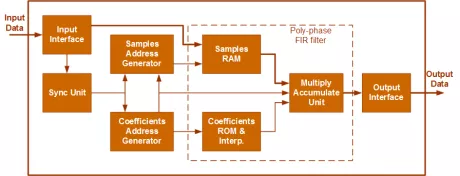
-
16-bit -90dB THD+N Multi-Channel Audio Sample Rate Converter
- This core can be used to interface digital audio equipments operating at different sample rates.
- It has been designed for systems that require a low-cost solution, maintaining low harmonic distortion and noise, and a high tolerance and rejection of input jitter.
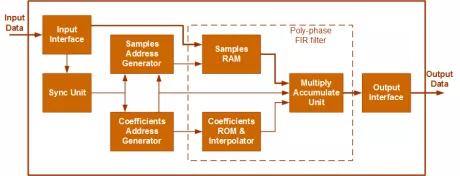
-
MIPI I3C Target Device
- MIPI I3C Basic Specification v1.2 compiliance
- Native 32-bit CPU Interface
- Optional CPU interface wrappers (APB, AHB, AXI)
- Legacy I2C communication with 7-bit Static Address
- I3C Single Data Rate (SDR) mode
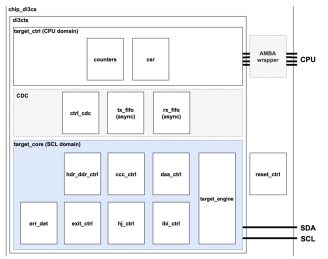
-
USB Full Speed Transceiver
- Exceeds USB 2.0 Full Speed specification.
- Trimmed pull up resistor.
- Enable / suspend feature.
- DPF and UFP options available.
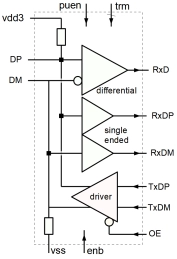
-
Complete USB Type-C Power Delivery IP
- Mixed signal Analog Front End Macros for 65n, 130n, 150nm, and 180n technologies.
- RTL code from AFE to I2C compatible register set.
- Stand alone C code for Protocol, Device Policy Manager, and System Policy Manager.
- IP demonstration & development board, with compliance reports.
- Full chip integration of USB Type-C, and associated software.
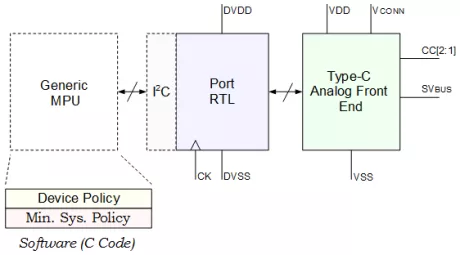
-
PCIe 6.0 PHY, TSMC N3A x4 1.2V, North/South (vertical) poly orientation for Automotive, ASIL B Random, AEC-Q100 Grade 2
- Supports the latest features of PCIe 6.x and CXL 3.x specifications
- Supports PAM-4 signaling and up to x16 lane configurations with bifurcation
- Delivers more power efficiency across channels with unique DSP algorithms
- Enables near zero link downtime with patent-pending diagnostic features